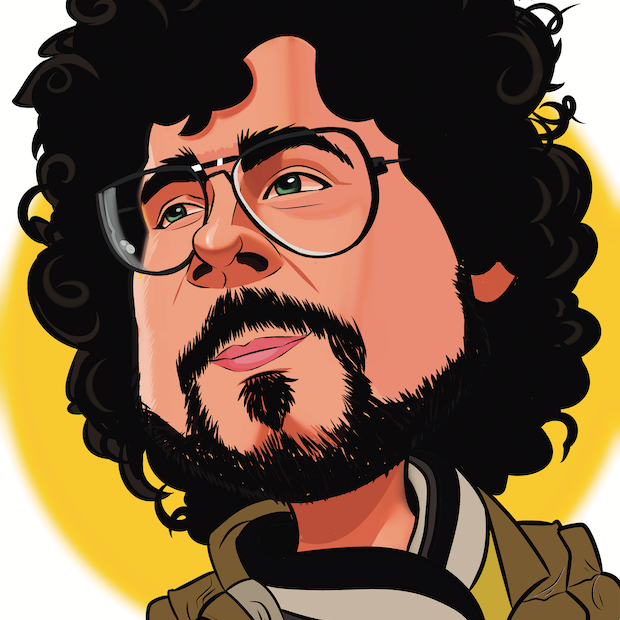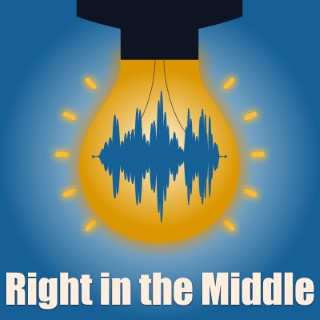- 01/12/2022
- rum
- creativity
- frustration
- clowns
- I really don't know why I keep adding tags, there's no search
Collaboration is not enough.
Script
Block #1
(teca calls)
(teca calls again)
(teca calls once more)
Oh! Sorry, Teca! I’m still terrified about that meeting. It was supposed to be a brainstorm, but it ended up being a shit storm.
(teca)
I agree, Teca! Liking or not, that was indeed collaboration. The thing is: collaboration doesn’t necessarily imply synergy. Collaboration is just the act of working together. It doesn’t say anything about whether the work will be successful or not.
If a team is working collaboratively, but they are constantly blocking each other’s ideas, the outcome is fated to be a disaster. Like what happened to our meeting.
On the other hand, if a team is working together without blocking** each other, chances are that a great outcome will meet them in the end. We’re on the same team. Ideas arise to be discussed, not to be blocked.
(teca)
Sometimes, Teca, people are afraid of making a mistake, especially when their organization punishes mistakes. It could also be for lack of confidence, comfort or both.
A simple and effective solution, in my humbly-grumpy opinion, is to co-create instead of just collaborate.
(teca)
Am I really so predictable, Teca? Yes, I’m gonna go downstairs, grab a glass of rum and start another crazy story that seems completely unrelated to this conversation. And, yet, everything is gonna make sense in the end. (At least I hope.)
Ready to go?
(teca)
Block #2
Teca, let’s move away from the technology context for a while and focus on… theatrical improvisation.
When the actors are about to start a scene, they need to build it on top of each other’s proposed idea. If the scene starts, but the ideas are blocked, it would go nowhere:
- Hey, Martin! Nice to see you here!
- Sorry, sir, I’m not Martin!
(music: now the world don’t move)
Did you see, Teca? Blocking the idea led nowhere. Had the second actor accepted the idea, the scene would smoothly continue, for the delight of the audience. Actually, blocking ideas is even considered a bad behavior in improvisation contests, regardless of where they came.
It doesn’t take too much to accept an idea, as it doesn’t take too much to block it. Just say “yes” and keep going. Saying “no” is game over.
Back to our meeting. It was a plethora of “no’s” . A deep sea of negativism. Surely one I don’t wanna sail through.
(teca)
That’s a good point, Teca! I really don’t agree with all the ideas they proposed. But blocking them is not fair, and the first reason is simple: even the crappiest idea can set the basis for the best one!
Moreover, if you block a person, they would probably stop contributing. This not only stops the creative flow, but also biases the outcome. Why not just say “yes” and keep the momentum forward? If a bad idea is suggested, it would be naturally discarded later.
Again, let’s just say “yes” now and try to prove it wrong later. It might sound contradictory at first. But, remember, we are exercising teamwork first. So we need to prove that we are wrong, not the other person is wrong.
That’s why I keep enforcing the “yes”. We need to stop doing just collaboration and start doing co-creation.
Block #3
Teca, one important aspect of co-creation is: you have to make the others shine. That’s the easiest and fairest way of getting everyone to shine.
I told you we need to say “yes”. What I haven’t told you is to what exactly we need to say “yes”.
(teca)
Yeah! But when we say “yes” to the other person’s idea, we’re actually saying “yes” to that person. That’s the final “yes” in the list. So let’s go one by one, shall we?
First we need to understand and accept our current condition, so we need to say “yes” to ourselves. I’m grumpy by design, but there are times when I’m even harder to deal with, so I need to accept that first in order to get back to an acceptable myself.
Then we need to say “yes” to the environment. Actively listening to others and paying attention to what’s happening around is key. Sometimes I find myself so worried about what I’m gonna say that I don’t pay too much attention to what the others are saying. My Attention Deficit and Hyperactivity Disorder just boosts this to a whole new and crazy level, but I’m learning how to say “yes” to that in the first place.
Now we get to the final and most important “yes”: to our peers. The creative flow is now open.
There is a particular class of heroes who are able to say “yes” to anyone: the clowns. A clown treats others equally, they laugh with the other, not about the other. They laugh about themselves. They work with human relations. They connect with the others. They are not affected by society’s judgment.
As children, we see the world with naked eyes. Creativity flows without any type of constraints. Then we start losing it as we become adults. Society demands we behave like “grown ups”, which blocks our creativity and our natural ability to connect with others. A clown has learned how to unlock it, or never had it locked in the first place.
I’m not saying we should all quit our jobs in favor of joining the Jacques Lecoq International Theater School. My point is: clowns can teach us how to better connect with others and keep the creative flow going.
So, I insist, Teca, say “yes” to yourself, to the environment and to the others. If we all do that, we will do way more than just collaborate, we will co-create.
Block #4
Take Open Source Software, for example. It’s essentially built on collaboration, not co-creation. It usually starts with someone solving their own problem and publishing the solution. Contributions are often made by the ones with a slightly different problem that is almost already solved by the software. All this makes the software grow. As it gains traction, people start to use it in different scenarios and discover interesting behaviors. Sometimes it’s a bug, sometimes it’s a feature. Regardless, the software grows collaboratively. So what’s the problem here?
Pidgin, for example, got a fork in 2008 because they took off the manual resizable input message area. Their excuse for it was they wanted to find one solution that fits the needs of all users. The team could just add a checkbox for the user to choose between a manually or automatically resizable input area, but they chose not to do it. Maybe they didn’t realize one of the most critical features of instant message software happens within an input area.
The whole ticket is unbelievably ridiculous. No solution will ever satisfy all users. Pidgin’s team was proved wrong, but decided to react by crapping on their users. It was clear that only ideas aligned with their dogmas would be accepted.
When you need to follow the author’s dogmas, if you’re not part of the solution, you’re part of the problem. That’s the reason behind the “just fork it” responses. That’s why the fork Carrier was created.
So much sweat and blood because of a wacky feature removal… and Carrier’s last release was only 2 years after its debut. So much energy lost…
Block #5
Wikipedia, the “Free Encyclopedia”, is another good example of the dangerousness caused by collaboration without co-creation. Let’s go through a list of Wikipedia’s controversies extracted from… Wikipedia, of course:
-
In late February 2002, the Spanish Wikipedia community decided to break away (“fork”) from Wikipedia to protest against plans by co-founders Jimmy Wales and Larry Sanger to sell advertising on Wikipedia sites.
-
September, 2005. The Seigenthaler incident was a series of events that began in May 2005 with the anonymous posting of a hoax article in Wikipedia about John Seigenthaler, a well-known American journalist. The article falsely stated that Seigenthaler had been a suspect in the assassinations of John and Robert Kennedy.
-
Still in that month, professional book indexer Daniel Brandt started a Wikipedia criticism website in response to his unpleasant experience while trying to get his biography deleted. Needles to say the website is not defunct.
-
December, 2005. Wikipedia co-founder Jimmy Wales was found to be editing his own Wikipedia article. According to public logs, he had made 18 edits to his biography, seven of which were alterations of information about whether Larry Sanger was a co-founder of Wikipedia.
This is gonna take forever, let’s fast forward.
-
In November, 2021, it was discovered that, for several years, a man had his picture associated on Wikipedia and Google with a serial killer who had the same name.
-
June 2022 – A Chinese woman was found to have “created over 200 fictional articles on the Chinese Wikipedia, writing millions of words of imagined history that went unnoticed for more than 10 years.”
Wikipedia encourages and empowers everyone to collaborate and create a better knowledge base, so it’s normal to see collaboration in favor of the contributor’s ideal.
“If you want to find out what a man is to the bottom, give him power.” — I wonder if Lincoln would edit his Wikipedia’s article to attribute this quote to himself.
Speaking about power, NodeJS got a fork in December, 2014, because of questionable behaviors from its “benevolent dictator”. Joyent, the company behind NodeJS, had control over every single aspect of the project. In June, 2015, Joyent agreed to hand over the project to an independent foundation overseen by the Linux Foundation.
Damn, Teca! Is there something wrong with collaboration?
(Teca)
Great! You got it right, Teca!
Collaboration is not the issue, but we need more than just that to have a chance of success. It’s like how I see democracy: it’s just a way of giving you a choice, not to present you with good options. It’s definitely a requirement, but not a guarantee of success.
Collaboration doesn’t say anything about the intentions from both sides. Good intentions start with the three “yeses”: to yourself, to the environment and to the others.
So let’s stop blocking each other’s ideas. Let’s selfishlessly make others shine.

